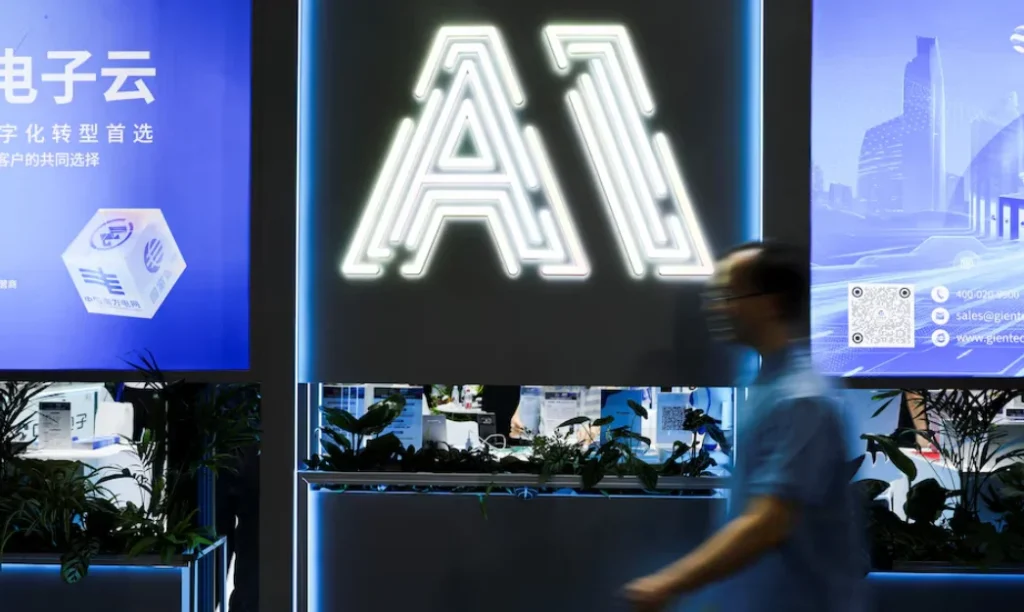Chinese AI Companies Form Strategic Alliances to Counter U.S. Tech Sanctions and Boost Domestic Innovation
Amid escalating U.S. export restrictions on high-end AI chips, China’s artificial intelligence sector is mobilising to create a robust homegrown ecosystem. At the 2025 World Artificial Intelligence Conference (WAIC) in Shanghai, Chinese firms unveiled two major industry alliances alongside a wave of next-generation AI technologies — signalling a bold step toward AI self-reliance.
New Alliances Aim to Strengthen China’s Domestic AI Ecosystem
Two new initiatives were announced:
- Model-Chip Ecosystem Innovation Alliance
Spearheaded by LLM developer StepFun, this alliance brings together leading Chinese AI chipmakers and large language model (LLM) developers. Key participants include:- Huawei
- Biren Technology
- Moore Threads
- Enflame
These firms have all faced U.S. export controls that block access to advanced Nvidia GPUs. The alliance focuses on creating a seamless integration from chip design to AI model development and infrastructure.
“This is an innovative ecosystem that connects the complete technology chain from chips to models to infrastructure,” said Zhao Lidong, CEO of Enflame.
- Shanghai General Chamber of Commerce AI Committee
This broader industry initiative focuses on integrating AI into traditional industries and supporting economic transformation. Members include:- SenseTime, pivoting from facial recognition to LLMs due to U.S. sanctions
- MiniMax, another prominent LLM developer
- Chipmakers Metax and Iluvatar CoreX
Huawei Unveils Advanced AI System to Rival Nvidia
One of the most buzzworthy announcements at WAIC was Huawei’s CloudMatrix 384, which integrates 384 of its latest Ascend 910C chips. According to U.S. research firm SemiAnalysis, this system outperforms Nvidia’s GB200 NVL72 on select benchmarks.
Huawei’s strategy involves leveraging system-level innovations and multi-chip clustering to offset individual chip performance gaps — a critical advancement amid tech restrictions.
Six other Chinese computing firms showcased similar clustering-based AI systems, including Metax, which revealed an AI supernode built with 128 C550 chips optimised for liquid-cooled data centre environments.
Major AI Product Announcements at WAIC 2025
Chinese tech giants also showcased several cutting-edge AI consumer and enterprise products:
- Tencent: Launched Hunyuan3D World Model 1.0, an open-source framework for generating interactive 3D environments using image or text prompts.
- Baidu: Revealed its next-gen “digital human” technology, capable of creating realistic virtual livestreamers by replicating voice, tone, and body language with just 10 minutes of sample footage.
- Alibaba: Unveiled Quark AI Glasses, powered by its Qwen model. Slated for release in China by late 2025, the glasses offer:
- Hands-free navigation via Baidu Maps
- QR code scanning with voice for Alipay transactions
China’s Strategic Push for AI Independence
These developments reflect China’s accelerated push to de-risk its AI sector by reducing reliance on U.S. technologies such as Nvidia GPUs. The newly formed alliances and technological breakthroughs showcased at WAIC 2025 underscore a national commitment to advancing artificial intelligence innovation despite geopolitical headwinds.
With support from both government and industry leaders, Chinese AI companies are laying the groundwork for a resilient, self-sustaining ecosystem capable of competing with global tech powerhouses.












